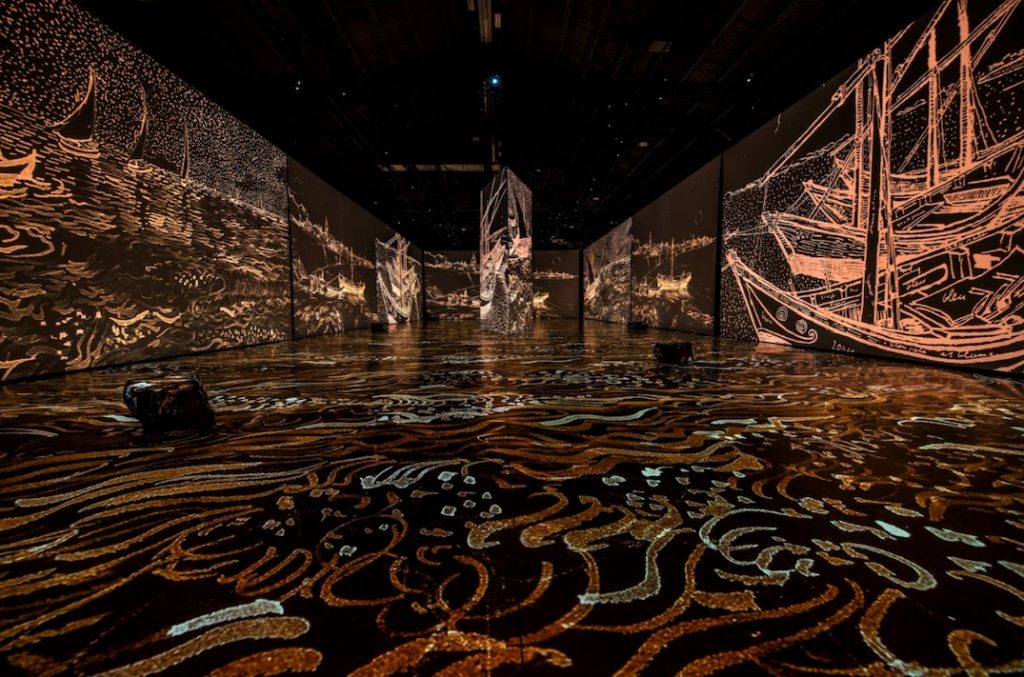Things past
A year later i still don’t know what came over me but I got the idea that I could write a 10-year (2010 – 2019) review of science culture in Canada during the last few days of 2019. Somehow two and half months later, I managed to publish my 25,000+ multi-part series.
- Part 1 covers science communication, science media (mainstream and others such as blogging) and arts as exemplified by music and dance: The decade that was (2010-19) and the decade to come (2020-29): Science culture in Canada (1 of 5).
- Part 2 covers art/science (or art/sci or sciart) efforts, science festivals both national and local, international art and technology conferences held in Canada, and various bar/pub/café events: The decade that was (2010-19) and the decade to come (2020-29): Science culture in Canada (2 of 5).
- Part 3 covers comedy, do-it-yourself (DIY) biology, chief science advisor, science policy, mathematicians, and more: The decade that was (2010-19) and the decade to come (2020-29): Science culture in Canada (3 of 5).
- Part 4 covers citizen science, birds, climate change, indigenous knowledge (science), and the IISD Experimental Lakes Area: The decade that was (2010-19) and the decade to come (2020-29): Science culture in Canada (4 of 5).
- Part 5: includes science podcasting, eco art, a Saskatchewan lab with an artist-in-residence, the Order of Canada and children’s science literature, animation and mathematics, publishing science, *French language science media,* and more: The decade that was (2010-19) and the decade to come (2020-29): Science culture in Canada (5 of 5).
Plus,
- An addendum: where I make some corrections and include a reference to some ‘biopoetry’: The decade that was (2010-19) and the decade to come (2020-29): Science culture in Canada (an addendum).
Sadly, 2020 started on a somber note with this January 13, 2020 posting, In memory of those in the science, engineering, or technology communities returning to or coming to live or study in Canada on Flight PS752.
COVID-19 was mentioned and featured here a number of times throughout the year. I’m highlighting two of those postings. The first is a June 24, 2020 posting titled, Tiny sponges lure coronavirus away from lung cells. It’s a therapeutic approach that is not a vaccine but a way of neutralizing the virus. The idea is that the nanosponge is coated in the material that the virus seeks in a human cell. Once the virus locks onto the sponge, it is unable to seek out cells. If I remember rightly, the sponges along with the virus are disposed of by the body’s usual processes.
The second COVID-19 posting I’m highlighting is my first ever accepted editorial opinion by the Canadian Science Policy Centre (CSPC). I republished the piece here in a May 15, 2020 posting, which included all of my references. However, the magazine version is more attractively displayed in the CSPC Featured Editorial Series Volume 1, Issue 2, May 2020 PDF on pp. 31-2.
Artist Joseph Nechvatal reached out to me earlier this year regarding his viral symphOny (2006-2008), a 1 hour 40 minute collaborative electronic noise music symphony. It was featured in an April 7, 2020 posting which seemed strangely à propos during a pandemic even though the work was focused on viral artificial life. You can access it for free https://archive.org/details/ViralSymphony but the Internet Archive where this is stored is requesting donations.
Also on a vaguely related COVID-19 note, there’s my December 7, 2020 posting titled, Digital aromas? And a potpourri of ‘scents and sensibility’. As any regular readers may know, I have a longstanding interest in scent and fragrances. The COVID-19 part of the posting (it’s not about losing your sense of smell) is in the subsection titled, Smelling like an old book. Apparently some folks are missing the smell of bookstores and Powell’s books have responded to that need with a new fragrance.
For anyone who may have missed it, I wrote an update of the CRISPR twin affair in my July 28, 2020 posting, titled, July 2020 update on Dr. He Jiankui (the CRISPR twins) situation.
Finishing off with 2020, I wrote a commentary (mostly focused on the Canada chapter) about a book titled, Communicating Science: A Global Perspective in my December 10, 2020 posting. The book offers science communication perspectives from 39 different countries.
Things future
I have no doubt there will be delights ahead but as they are in the realm of discovery and, at this point, they are currently unknown.
My future plans include a posting about trust and governance. This has come about since writing my Dec. 29, 2020 posting titled, “Governments need to tell us when and how they’re using AI (artificial intelligence) algorithms to make decisions” and stumbling across a reference to a December 15, 2020 article by Dr. Andrew Maynard titled, Why Trustworthiness Matters in Building Global Futures. Maynard’s focus was on a newly published report titled, Trust & Tech Governance.
I will also be considering the problematic aspects of science communication and my own shortcomings. On the heels of reading more than usually forthright discussions of racism in Canada across multiple media platforms, I was horrified to discover I had featured, without any caveats, work by a man who was deeply problematic with regard to his beliefs about race. He was a eugenicist, as well as, a zoologist, naturalist, philosopher, physician, professor, marine biologist, and artist who coined many terms in biology, including ecology, phylum, phylogeny, and Protista; see his Wikipedia entry.
A Dec. 23, 2020 news release on EurekAlert (Scientists at Tel Aviv University develop new gene therapy for deafness) and a December 2020 article by Sarah Zhang for The Atlantic about prenatal testing and who gets born have me wanting to further explore the field of how genetic testing and therapies will affect our concepts of ‘normality’. Fingers crossed I’ll be able to get Dr. Gregor Wolbring to answer a few questions for publication here. (Gregor is a tenured associate professor [in Alberta, Canada] at the University of Calgary’s Cumming School of Medicine and a scholar in the field of ‘ableism’. He is deeply knowledgeable about notions of ability vs disability.)
As 2021 looms, I’m hopeful that I’ll be featuring more art/sci (or sciart) postings, which is my segue to a more hopeful note about 2021 will bring us,

It’s an apple! This is one of the many images embedded in Annie Ewbank’s January 6, 2020 article about rare and beautiful apples for Atlas Obscura (featured on getpocket.com),
In early 2020, inside a bright Brooklyn gallery that is plastered in photographs of apples, William Mullan is being besieged with questions.
A writer is researching apples for his novel set in post-World War II New York. An employee of a fruit-delivery company, who covetously eyes the round table on which Mullan has artfully arranged apples, asks where to buy his artwork.
But these aren’t your Granny Smith’s apples. A handful of Knobbed Russets slumping on the table resemble rotting masses. Despite their brown, wrinkly folds, they’re ripe, with clean white interiors. Another, the small Roberts Crab, when sliced by Mullan through the middle to show its vermillion flesh, looks less like an apple than a Bing cherry. The entire lineup consists of apples assembled by Mullan, who, by publishing his fruit photographs in a book and on Instagram, is putting the glorious diversity of apples in the limelight.
…
Do go and enjoy! Happy 2021!
